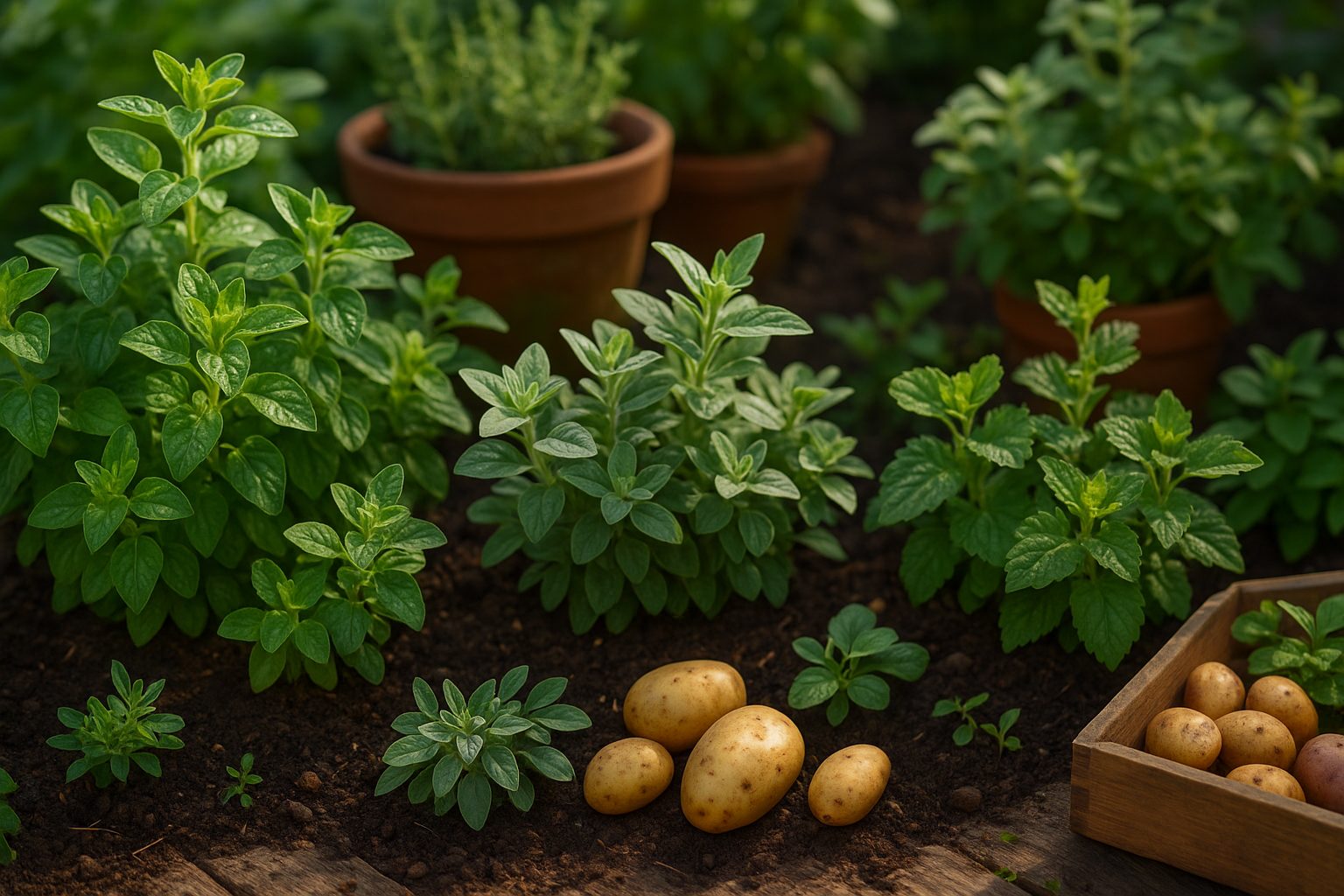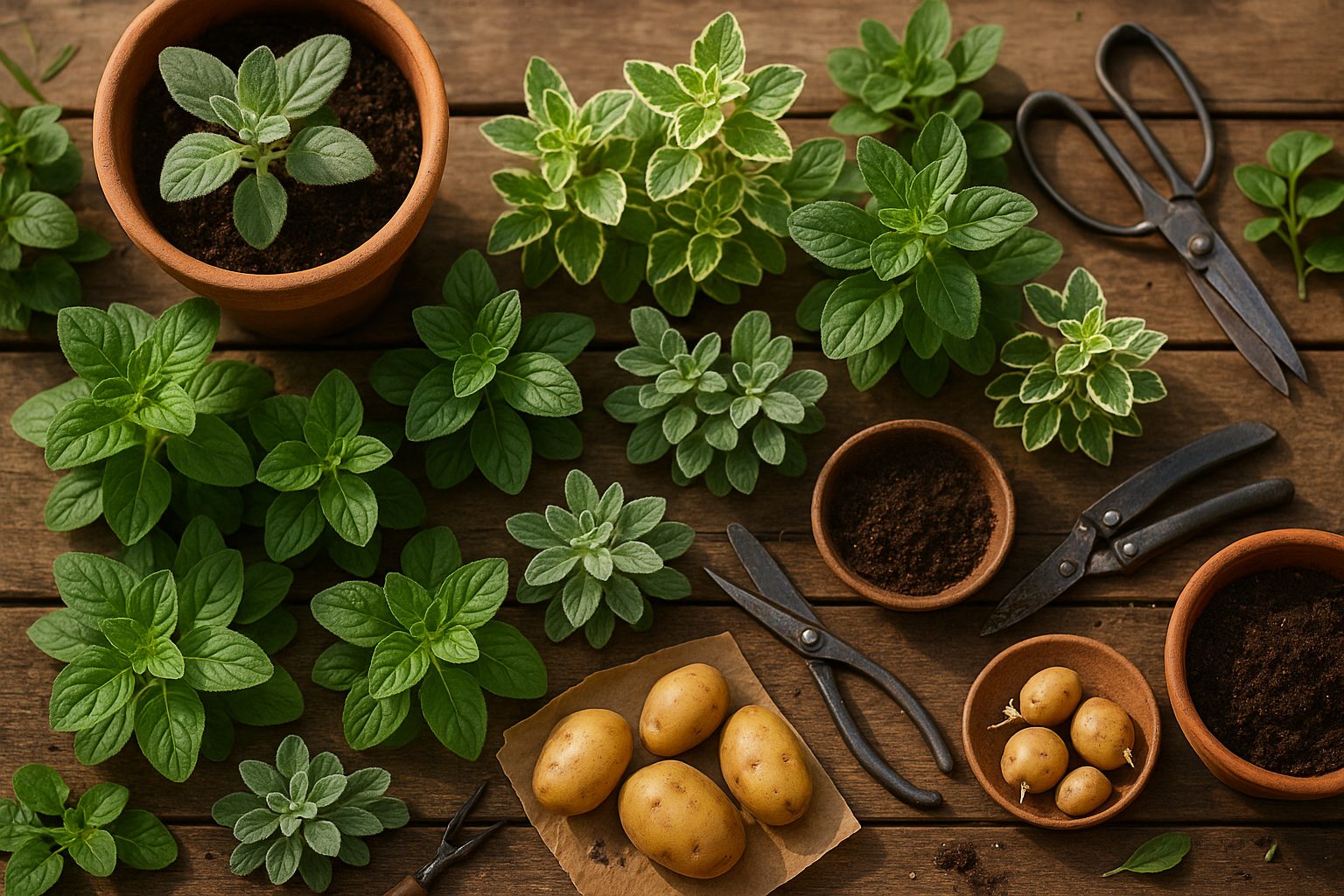Introduction to Mexican Oregano Varieties

When searching for the best Mexican oregano varieties, it’s important to first understand what makes Mexican oregano unique. Unlike the familiar Mediterranean oregano, which is part of the mint family and has a sweet, slightly bitter flavor, Mexican oregano belongs to the verbena family. It’s known for its bold, citrusy notes and subtle hints of licorice, making it an essential ingredient in authentic Mexican and Latin American cuisine.
Choosing the right variety is key—whether you’re enhancing your homemade salsa or planning a drought-tolerant herb garden. The specific type of Mexican oregano you select can greatly impact both the flavor of your dishes and the health of your plants. In this article, we’ll guide you through the top Mexican oregano varieties for cooking and gardening. You’ll learn which types offer the most vibrant flavors and which thrive best in various climates. That way, you can enjoy delicious meals and a thriving herb garden no matter where you live or how you like to cook.
What Makes Mexican Oregano Unique?
Mexican oregano stands apart from its Mediterranean cousin in more ways than one, starting with its botanical roots. While the oregano most people know belongs to the Origanum genus native to Europe, the best Mexican oregano varieties—such as Lippia graveolens—are part of the Verbenaceae family, closely related to lemon verbena. This difference means not only a distinct plant appearance, featuring bushier growth and tiny white or yellowish flowers, but also a unique chemical makeup in the leaves and essential oils.
Mexican oregano’s flavor is instantly recognizable: it delivers a vibrant mix of brightness and depth, combining citrusy notes with hints of licorice, subtle earthiness, and a lingering peppery kick. This bold profile cuts through rich dishes and holds up well to slow-cooked flavors, which is why it’s a staple in Mexican and Latin American cooking. You’ll find it in classics like pozole, birria, mole, and spice blends for tacos and enchiladas.
Different regional varieties further influence traditional recipes—for example, a Sinaloan variety might offer sweeter undertones, while oregano from Oaxaca may be sharper and more pungent. Choosing the right variety means honoring these regional traditions; using Lippia berlandieri in Tex-Mex chili con carne, for instance, unlocks that signature Southwestern earthy heat.
If you’re cooking at home, keep in mind that substituting Mediterranean oregano for Mexican oregano changes the final taste dramatically. To capture that true-to-region flavor and aromatic punch, be sure to seek out authentic Mexican oregano varieties.
“`html
Top Mexican Oregano Varieties for Home Cooks
When searching for the best Mexican oregano varieties for your kitchen, it’s helpful to know that “Mexican oregano” typically refers to the species Lippia graveolens, which differs from Mediterranean oregano. Lippia graveolens offers bold citrus and lemony undertones with a slight peppery bite—qualities that make it a staple in authentic Mexican cuisine.
Among the most celebrated regional varieties, Oaxacan and Jaliscan oreganos stand out. Oaxacan Mexican oregano is prized for its deeply earthy aroma and robust flavor, often carrying hints of anise and mint. It’s commonly used in mole sauces and slow-cooked meats. In contrast, oregano from Jalisco features a brighter, more floral profile with distinct citrus notes, making it ideal for lighter dishes like salsas, seafood, or grilled chicken.
When selecting Mexican oregano, both form and source matter. Dried Mexican oregano is most commonly available in stores; look for leaves that are vibrant green and avoid those with too many stems or brown bits, as these indicate age and reduced potency. A good-quality dried oregano should release a fragrant aroma when lightly crushed—a simple test to check freshness.
Fresh Mexican oregano, while harder to find outside Mexico, is worth seeking out, especially at Latin grocery markets. Choose bunches with perky, green leaves and avoid any showing wilting or yellowing. Whether fresh or dried, Mexican oregano’s punchy flavor enhances spice blends, bean dishes, adobos, and more. For the best flavor, crumble dried oregano just before use to unlock its full aroma and add a vibrant touch to your favorite Mexican recipes.
“`
Growing Mexican Oregano: Best Varieties for Your Garden
When it comes to growing Mexican oregano at home, selecting the best Mexican oregano varieties is key to a thriving, flavorful harvest. The most popular and adaptable species are Lippia graveolens (true Mexican oregano) and Poliomintha longiflora (also known as Mexican bush oregano). Lippia graveolens stands out for its citrusy, robust flavor and tolerance of hot, dry climates, making it ideal for home gardeners in USDA Zones 9-11. Meanwhile, Poliomintha longiflora can handle brief cool snaps and is better suited for slightly cooler regions.
Both varieties thrive in full sun and well-draining soil. If you live in an area with colder winters, consider planting your oregano in containers so you can move it indoors or to a sheltered spot during frosts. When buying seeds or seedlings, be sure the label specifies the variety—some nurseries may mistakenly offer European or Cuban oregano, which have distinctly different flavors and growth requirements. Look for healthy seedlings with vibrant green leaves and no signs of pests or disease, or purchase from reputable seed sources to get true Mexican oregano.
Both Lippia graveolens and Poliomintha longiflora are generally pest-resistant and fairly drought-tolerant once established, but they do need consistent drainage—overwatering is the most common cause of plant failure. Watch for spider mites and aphids, especially if growing indoors or in containers, and treat any infestations early using neem oil or insecticidal soap.
With the right variety and care, Mexican oregano is a reliable and rewarding addition to any herb garden.
Flavor and Aroma Comparison Among Varieties
When exploring the best Mexican oregano varieties, the differences in flavor and aroma are easy to notice, whether in home kitchens or professional restaurants. Lippia graveolens, the most common type of Mexican oregano, has a bold, earthy aroma with citrus and pepper notes. Its robust flavor stands out in rich dishes, making it ideal for pozole or hearty red salsas. It complements pork and deep chiles without overpowering other spices.
On the other hand, Poliomintha longiflora—often called “Mexican sage oregano”—offers a more delicate, floral scent with subtle hints of mint and anise. Its lighter profile makes it perfect for grilled meats like carne asada and seafood dishes where you want herbal complexity without bitterness.
If you’re after authentic central Mexican flavors, Lippia graveolens is your go-to for soups, stews, and adobo marinades. Meanwhile, Poliomintha longiflora shines in lighter dishes and regional northern Mexican recipes. To get the most aroma and flavor, crush the leaves just before adding them to your dishes.
For the best results, try experimenting with both varieties to see which suits your favorite recipes and palate preferences.
How to Store and Use Mexican Oregano for Maximum Flavor
To preserve the best Mexican oregano varieties at their peak flavor, it’s important to store them properly depending on their form. For dried oregano, keep the leaves whole whenever possible and crush them just before use—this helps retain the essential oils that give it that bold, citrusy aroma. Store dried Mexican oregano in an airtight container away from light and heat, such as in a pantry or spice drawer, for up to six months.
If you’re lucky enough to have fresh Mexican oregano, wrap the sprigs in a slightly damp paper towel and place them in a resealable bag in the refrigerator; this should keep them vibrant for about a week. For long-term storage, lay the sprigs flat to dry or freeze them in olive oil cubes to toss directly into your dishes.
When cooking, add dried Mexican oregano earlier in simmered sauces, soups, or stews to give the flavors time to infuse. For fresh oregano, add it toward the end of cooking for a brighter, herbal note. Crushing the dried leaves in your hands just before adding them releases even more fragrance. Try sprinkling a pinch over tacos or grilled vegetables right before serving for a fresh pop of flavor — one of the joys of these exceptional oregano varieties.
Where to Buy and Source Authentic Mexican Oregano
Finding authentic Mexican oregano can greatly enhance your cooking, thanks to its robust, citrusy flavor that sets it apart from Mediterranean oregano. To find the best Mexican oregano varieties, start by exploring local Hispanic or Latin American markets, where fresh or dried oregano is often sold in bulk and labeled specifically as “orégano mexicano.”
Specialty spice shops and gourmet retailers may also carry authentic Mexican oregano. When possible, ask about the herb’s origin or look for packaging that lists “Lippia graveolens,” the botanical name for true Mexican oregano. Online, trusted retailers like The Spice House, Spices Inc., and Rancho Gordo offer high-quality Mexican oregano with clear sourcing information.
Be careful—Mediterranean oregano (Origanum vulgare) is more common in mainstream supermarkets and looks similar but has a milder, less citrusy flavor. Genuine Mexican oregano leaves are usually larger, darker, and have more jagged edges. Avoid products labeled simply as “oregano” without specific origin details.
Consider brands like El Guapo or Badia, which often indicate the source region on their packaging. Whether shopping online or in person, look for oregano with a pungent, almost lemony scent combined with peppery notes—that’s a sure sign you’ve found authentic Mexican oregano.
Conclusion: Choosing the Right Mexican Oregano for You
When selecting from the best Mexican oregano varieties, it’s important to consider both your culinary goals and gardening needs. Varieties like Lippia graveolens offer bold, citrusy flavors that are perfect for authentic salsas and chili, while Poliomintha longiflora has softer notes that shine in soups and marinades. Some types thrive in hot, dry climates and also serve as attractive, drought-resistant herbs in your garden, making them both practical and flavorful.
No matter your preference, experimenting with different Mexican oregano varieties can reveal subtle nuances in taste and aroma that elevate your dishes. Don’t hesitate to try both fresh and dried forms or even blend varieties for unique results. For a deeper dive, consider exploring how to propagate Mexican oregano at home or the differences between Mexican and Mediterranean oregano in classic recipes.
Whichever path you choose, these dynamic herbs bring vibrant, traditional Mexican flavor right to your kitchen and backyard.
